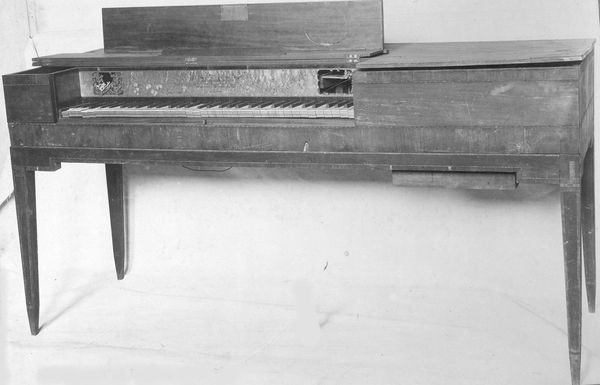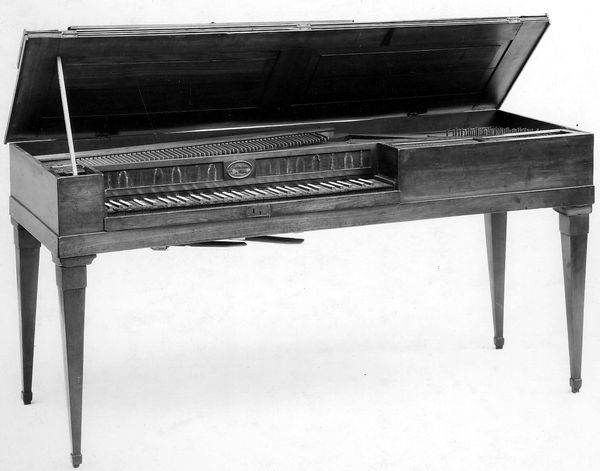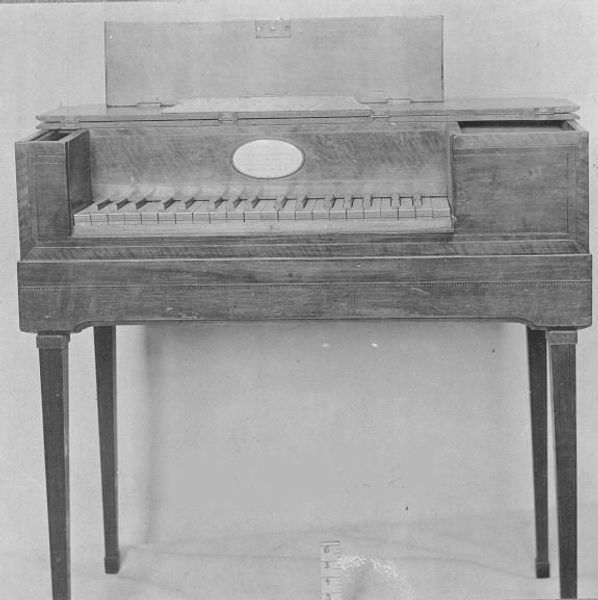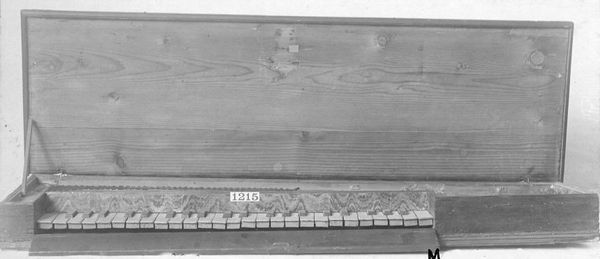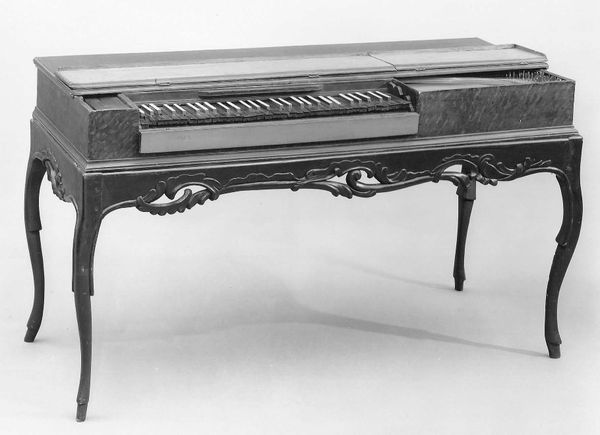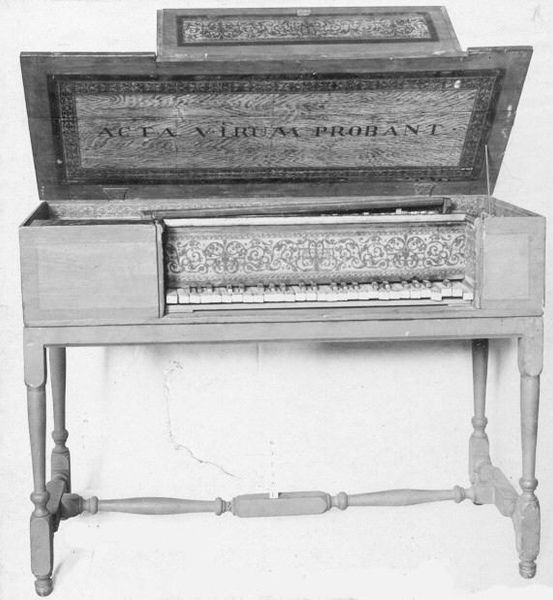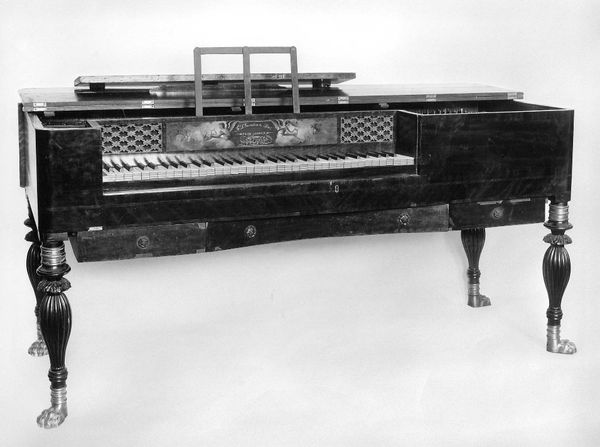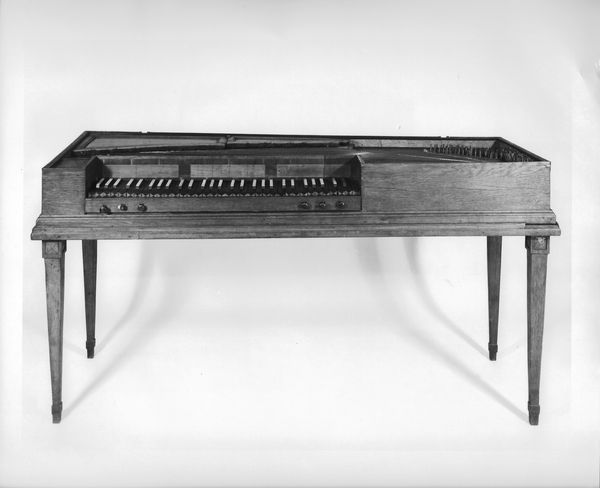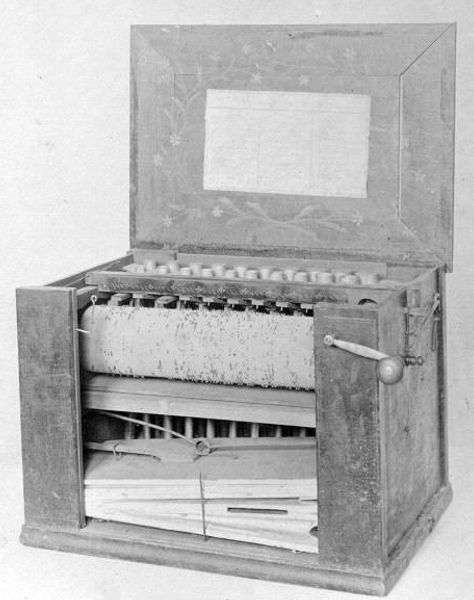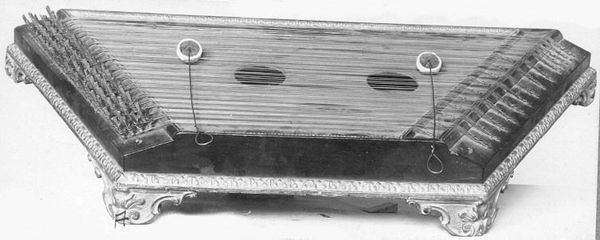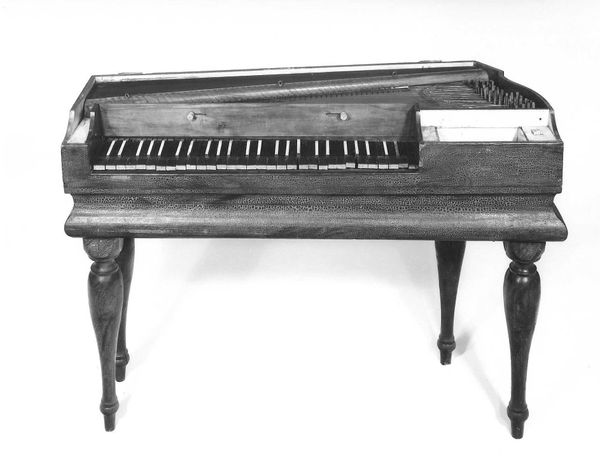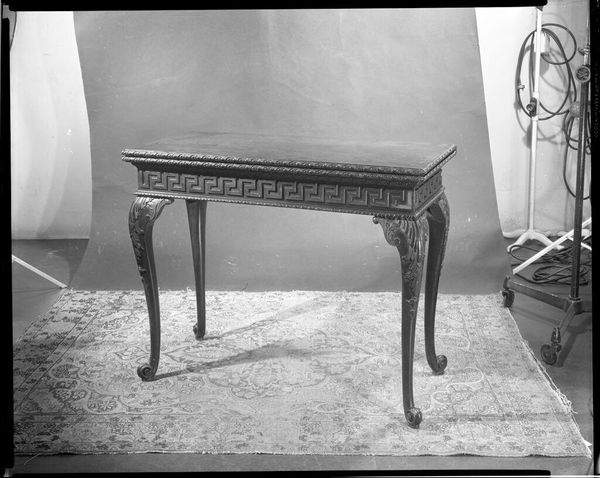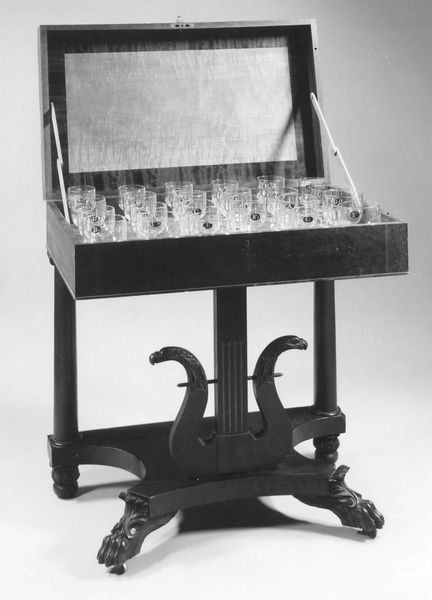
metal, photography, wood
#
still-life-photography
#
metal
#
photography
#
romanticism
#
wood
#
musical-instrument
Dimensions: Case length (perpendicular to keyboard) 36.6 cm, Width (parallel to keyboard) 106.0 cm, Case depth (wihtout lid) 15.5 cm, Total height 75.5 cm
Copyright: Public Domain
Curator: Here we have a photograph of a Square Piano, made between 1791 and 1815. Editor: Immediately, it whispers secrets of bygone drawing rooms to me. The composition, stark and shadowy, lends the piece a nostalgic aura. Does it speak to you? Curator: It certainly does. Contextually, this style of piano coincided with significant shifts in musical performance and accessibility, and also relates to evolving societal gender roles of the time. The instrument appears almost anthropomorphic, possessing a silent agency that hints at narratives beyond pure aesthetic formalism. Editor: Agency... I like that. Looking at those keys—almost worn smooth—I imagine clandestine sonatas being composed under candlelight. Do you think the photographer, Katholnig, felt that ghostly presence? Curator: Considering that Katholnig worked in a period defined by rapidly developing technology and ideologies, one can surmise that he was concerned with how photography could both preserve the past and also engage with a new, changing cultural landscape. He would have positioned himself in the cross currents of progress and tradition. Editor: That's such an interesting lens! I hadn't considered how new and exciting photography must have been back then. But thinking about these old instruments... there's also a touch of sadness about it, this idea of silencing, especially within patriarchal structures. Curator: Precisely. Its presence invites reflections on domesticity, artistry, and the subjugation of women, issues we continue grappling with today. It allows for intersectional explorations of gender, class, and artistic production. Editor: Right. Seeing this, I remember taking my first music classes. Such intense discipline, sitting in a hard, straight-backed chair while trying not to wince from boredom! Perhaps some rebellions against structures start small…at a piano. Curator: It’s evocative, no doubt. In studying images such as these, and the cultural contexts that birthed them, we develop greater insight into art history, critical theory, and social issues. It can offer many useful understandings to broader patterns and practices. Editor: Yes. It resonates in unpredictable ways if you just open your mind to it. Like unearthing old love letters in your attic. Curator: Beautifully said. Editor: A very pretty photograph indeed!
Comments
No comments
Be the first to comment and join the conversation on the ultimate creative platform.
